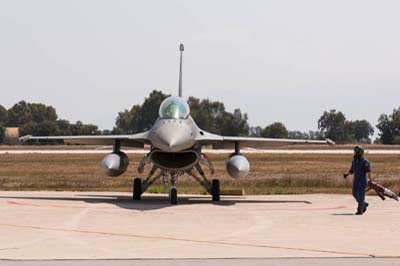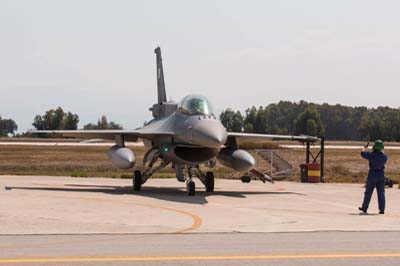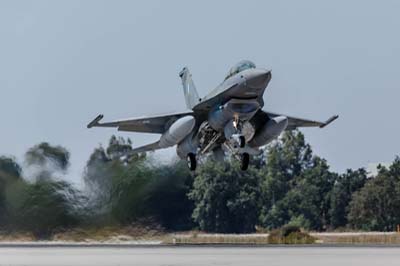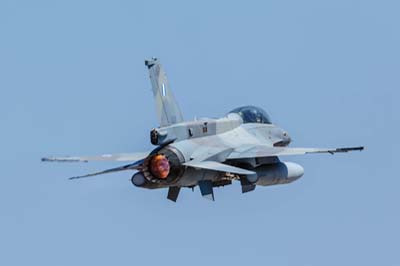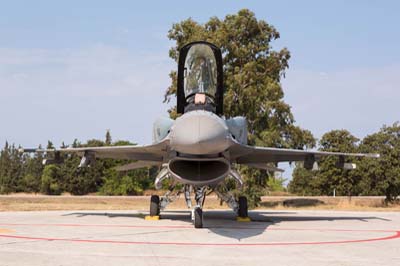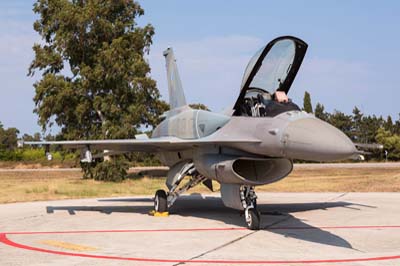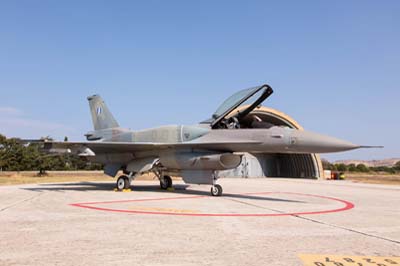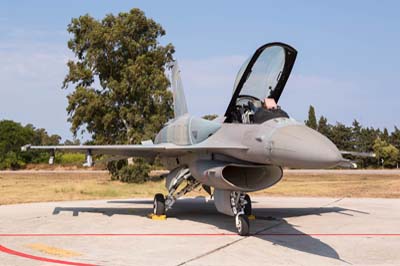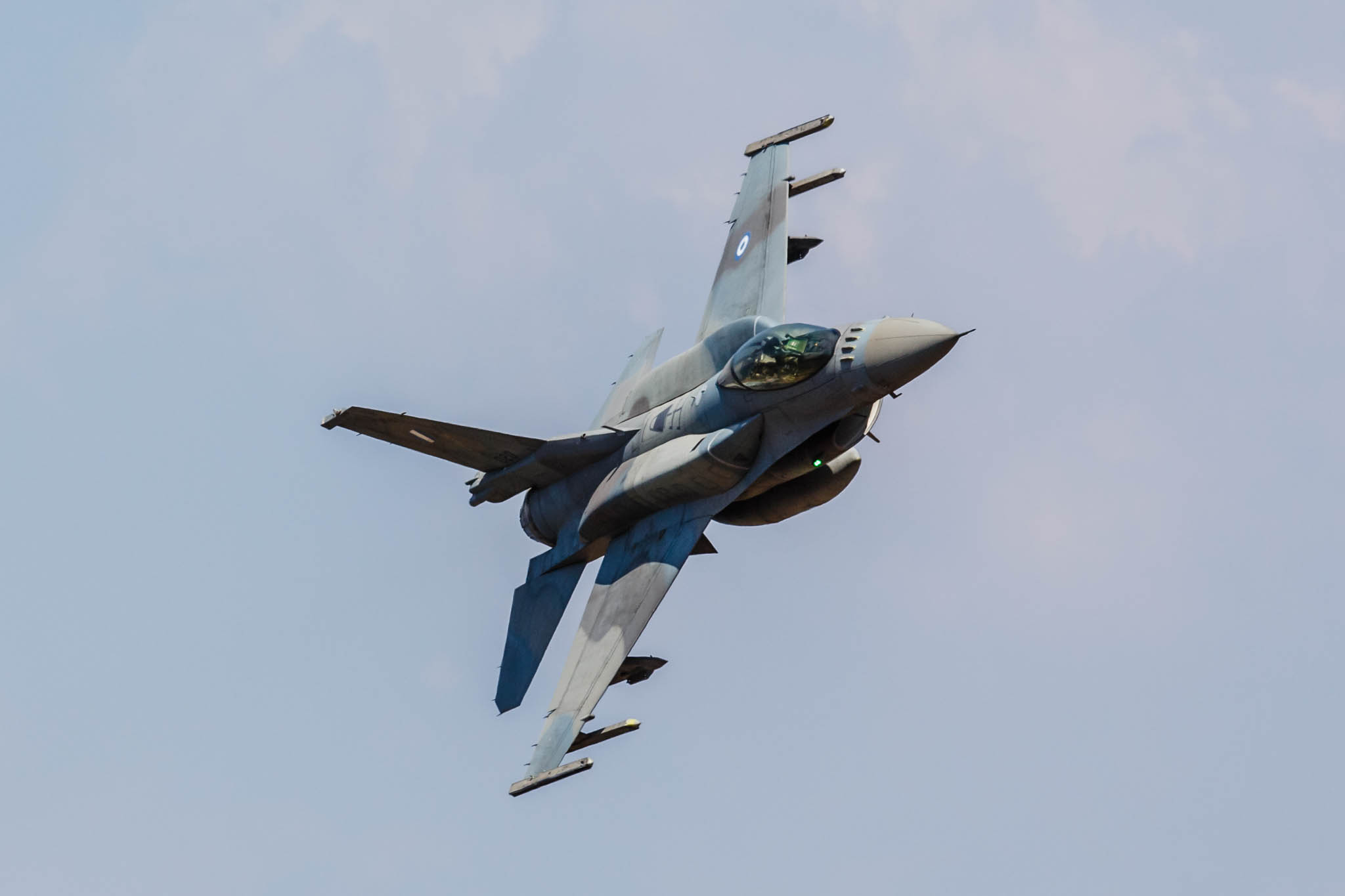Hellenic Air Force - Elliniki Polemiki Aeroporia
Araxos Air Force Base
Greece
July 2013
|
The LTV A-7 Corsair IIs of 116 Combat Wing (Pteriga Machis - 116 PM), 336 Squadron (Mira - 336 M)
Developed in the early 1960s to replace the Vought F-8 Crusader, the Ling-Temco-Vought A-7 Corsair II first saw service from 1967 with the United States Navy as a carrier-based subsonic light attack aircraft. The more powerful A-7D entered service with the United States Air Force from 1970. The A-7 was one of the first fighter aircraft to feature a Head Up Display (HUD) and an Inertial Navigation System (INS). The aircraft was finally retired from US service in 1991. |
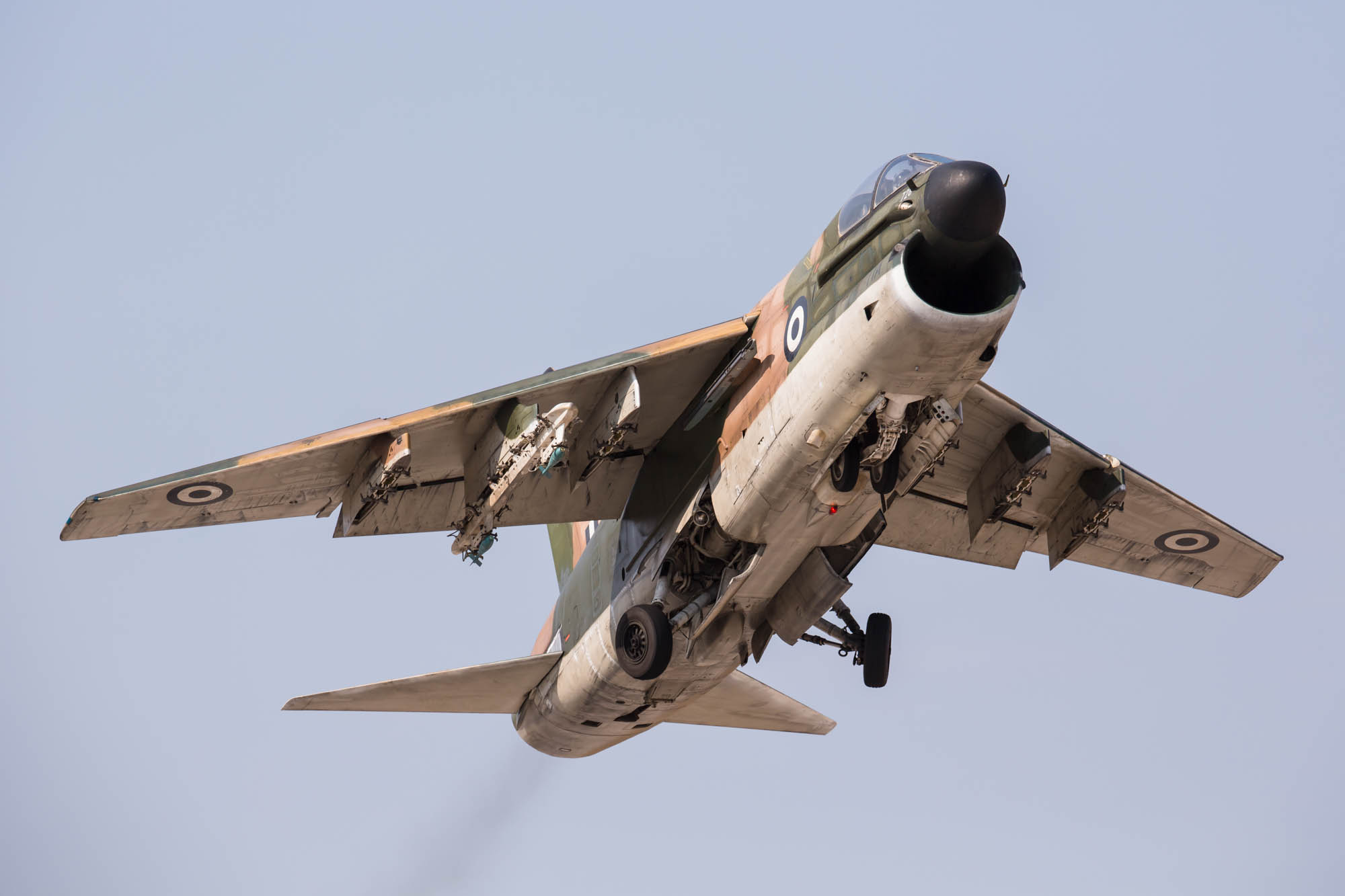 |
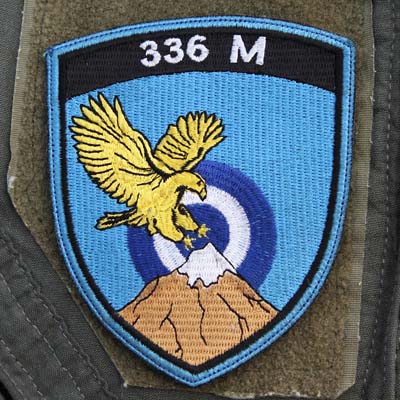
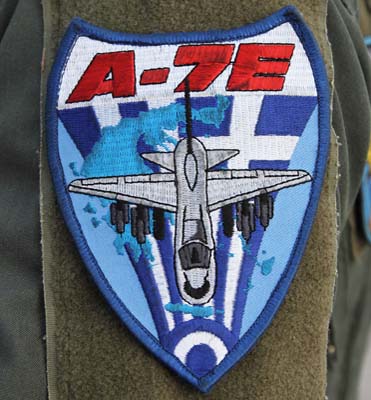
The Hellenic Air Force (HAF) received 60 new A-7H Corsair IIs from 1975, these were based on the A-7E but did not have air-refuelling capability. They were initially based at Larissa with 347 ‘Perseas’ Squadron and at Souda with 340 ‘Fox’ and 345 ‘Lailaps’ Squadrons. These original aircraft remained in service till 1997 when the surviving aircraft were put into storage at Agrinio and Tanágra. In 1980 the HAF also took delivery of five new two-seat TA-7Hs which were flown until 2007 before they too went into storage.
In 1992 60 A-7Es were acquired along with six TA-7Cs these aircraft that had previously been operated by the USN. These aircraft were delivered between 1992 and 1994 to Araxos air base for 116 Combat Wing, 335 ‘Tiger’ Squadron and 336 ‘Olympos’ Squadron. They replaced the Lockheed F-104G Starfighter which was eventually retired in March 1993.
A further six TA-7Cs were added to the fleet, taken from AMARC storage in the Arizona desert in April 2001. In 2002 all the remaining A-7s were transferred to Araxos air base. 335 Squadron ceased flying the A-7 on February 27, 2008 many of their aircraft bolstered those operated by 336 Squadron and surplus aircraft were put in to open storage at Araxos. 336 continues to fly the A-7E and TA-7C and has now the distinction of being the last unit in the world to fly the A-7 Corsair II.
The A-7’s varied role with the HAF includes close air support (CAS), tactical support maritime operations (TASMO), ground attack and bombing operations. The A-7 can conduct in-flight refuelling operations both as receiver and tanker to extend its range.
The A-7E has an internally mounted M61A1 20 mm six barrel cannon, six wing pylons and two fuselage launch stations. The pylons can carry a large single weapon, multiple racks capable of six weapons per rack, or triple racks with three weapons per rack. The wing pylons can carry four wing-mounted 300 gallon fuel tanks and a combination of a wide range of general-purpose bombs totalling 15,000 lb (6,800 kg), including; up to 30× 500 lb (230 kg) Mark 82 bombs, Paveway Laser-Guided Bombs (LGB), AGM-45 Shrike, AGM-62 Walleye, AGM-65 Maverick, AGM-88 HARM and GBU-15 electro-optical glide bombs. It has been reported that Greece also imported over 4,000 CBU-55B cluster bombs between 1970 and 1995. The AFDS (Autonomous Free-flight Dispenser System), containing 16 BLU-108B bomblets was also certified for the A-7. Greece previously participated in NATO nuclear weapons sharing using the A-7 to deploy US tactical B.61 nuclear bombs, in 2001 for strategic reasons they were put into storage. They were optimised for the AIM-9L/P Sidewinder for self-protection utilising the two fuselage launch stations.
After 1986 the A-7Es were equipped to carry the AAR-45 LANA (Low-Altitude Night Attack) FLIR (Forward Looking infrared) pod which projects an amplified light image on the HUD and in conjunction with radar, it enables terrain following down 200 feet (60m) at to 460 mph (740 km/h). Smart weapons in conjunction FLIR they can be delivered day and night.
|
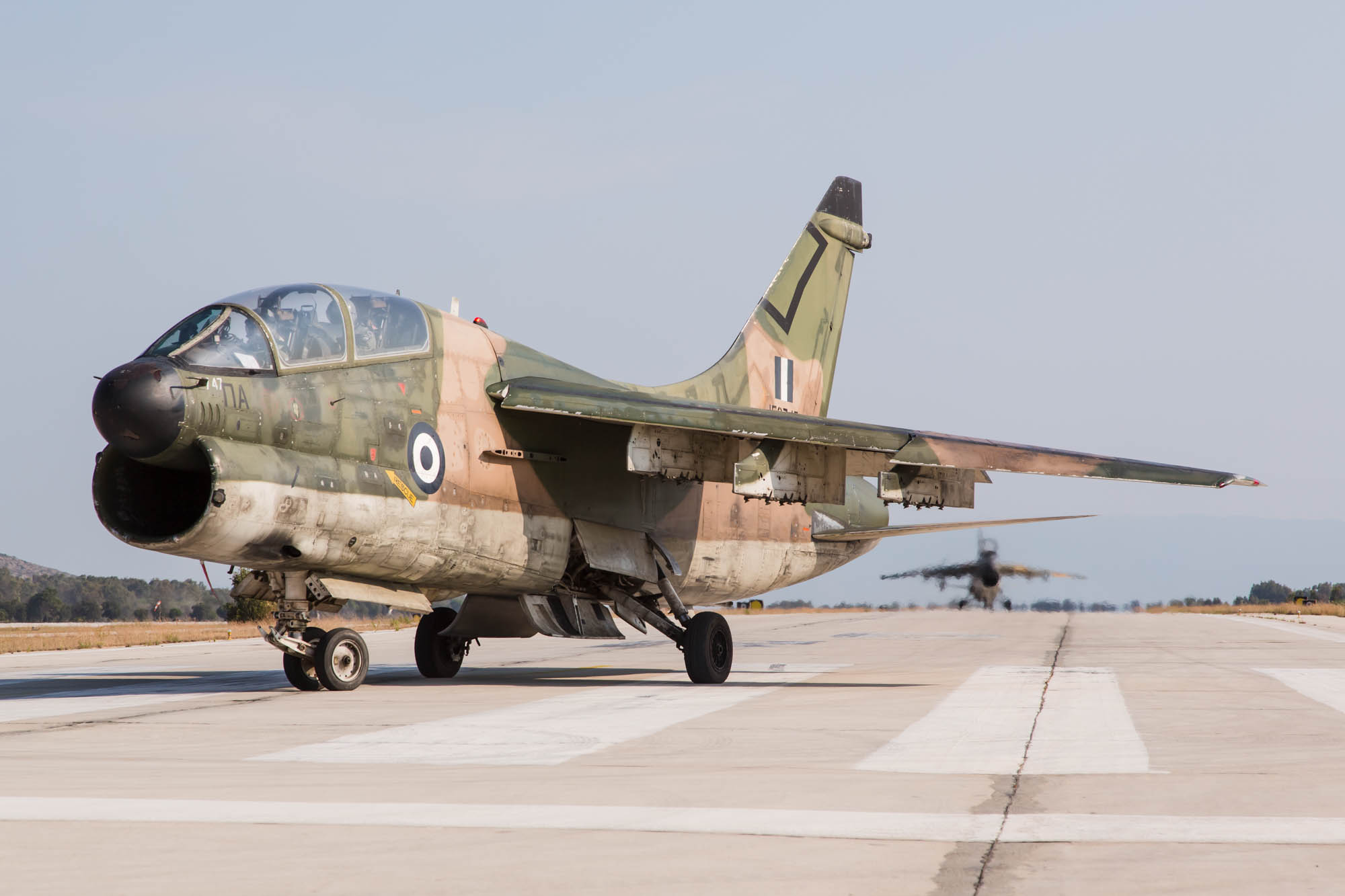 |
TA-7C Corsair II (156747)
|
| Left to right: TA-7C Corsair II (156753) launching from within a Hardened Aircraft Shelter (HAS). |
Left to right: TA-7C Corsair II (156753) launching from within a Hardened Aircraft Shelter (HAS).
|
Two of the six former US Navy TA-7C Corsair IIs (156753 and 156747) received in 1992 during a final exterior inspection ('last chance').
|
| Left to right: TA-7C Corsair IIs (156753 and 156747). |
Left to right: TA-7C Corsair IIs (156753 and 156747).
|
Left to right: TA-7C Corsair IIs (156753 and 156747).
|
| Left to right: A-7E (160728). |
| TA-7C Corsair II (156747) |
Left to right: TA-7C Corsair II (156747).
|
Left to right: A-7E (160566).
A-7Es are equipped to carry the AAR-45 LANA (Low-Altitude Night Attack) FLIR (Forward Looking infrared) pod (see inner starboard pylon) which projects an amplified light image on the Head-Up Display (HUD).
TA-7C Corsair II (154477).
|
Left to right: A-7E Corsair IIs (157502, 154477, 159648 and 160566).
|
| The Lockheed Martin F-16C/D Block 52M Fighting Falcons of 116 Combat Wing, 335 Squadron |
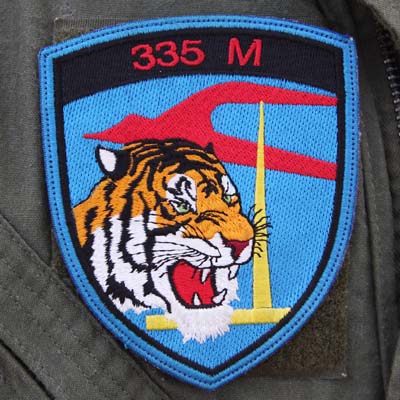
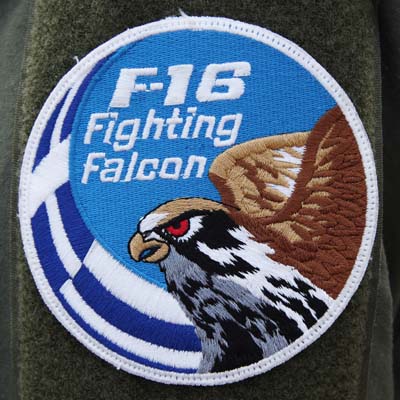 The first of the latest batch of F-16 Block 52M arrived at Araxos on May 22, 2009 for the 335 Squadron to replace the LTV A-7E Corsair II, leaving just 336 Squadron to operate the aircraft for an expected further two years. The batch was completed when the last Block 52M (F-16D serial 030) arrived with three F-16C Block 52Ms on January 28, 2010.
The first of the latest batch of F-16 Block 52M arrived at Araxos on May 22, 2009 for the 335 Squadron to replace the LTV A-7E Corsair II, leaving just 336 Squadron to operate the aircraft for an expected further two years. The batch was completed when the last Block 52M (F-16D serial 030) arrived with three F-16C Block 52Ms on January 28, 2010.
The infrastructure of Araxos had to be upgraded in time for the first delivery. The new facilities included two aircraft hangars, two squadron operations buildings and an engine maintenance building. A flight simulator resides in a building shared with the A-7 pilots of 336 Squadron.
Colonel Kostas Vouzios, commander of 116 CW since June 2008 was brought in to manage the move from the venerable A-7 to the most modern F-16s, he announced earlier this year, “It is my job is to make sure the transition goes smoothly.” Col. Vouzios oversaw the introduction of the first Block 50 F-16s when commander of 347 Squadron at Néa Anchialos, for the Peace Xenia II program, he has over 2,000 hours of flying time in the F-16. During the Peace Xenia III program when with HAF’s Tactical Air Force command, he helped plan the creation of the first Block 52+ F-16 squadrons at Souda Bay on Crete.
Col Vouzios announced that 335 Squadron had passed its Operational Evaluation test in March 2010, the final phase of the OpEval included four Block 52Ms and an Erieye AEW aircraft using the Link-16 network. Ground attack scenarios using JSOWs (Joint Stand Off Weapon) delivered in November 2009 were included in the evaluation.
The next task for the 45 assigned pilots and their 30 aircraft is the expansion of the Squadron's capabilities to include a reconnaissance role. With the Goodrich DB-110 airborne reconnaissance system, a pilot day and night can capture images using its electro-optical sensors, transmitting images in real time to a ground based command centre. “We have to start our operational concept for the reconnaissance mission from scratch”, reported Col Vouzios. “The manufacturer provides the data on how the system works, but the operational tactics are country-specific. We can’t borrow from other users’ experience, so we have a lot to accomplish with this advanced capability”.
335 Mira can trace its history back to October 1941 when it was formed during the German occupation of Greece. The Squadron’s first pilots were trained by the RAF in Iraq from 1940 before they redeployed to Italy and finally to Greece in October 1944. They were initially equipped with the Hawker Hurricane Mk.II which were later replaced by the Supermarine Spitfire Mk.V in 1943. In 1953 the Squadron got its first jets, the Republic F-84G Thunderjet and the Lockheed RT-33A Shooting Star. In 1957 they re-equipped with the Republic F-84F Thunderstreak which were in turn replaced by the Lockheed F-104G Starfighter in 1965. In 1977 335 Squadron relocated to Araxos to join 116 CW and continued to fly the Starfighter till 1992, when after 27 years service they were replaced by the A-7E and TA-7C Corsair. |
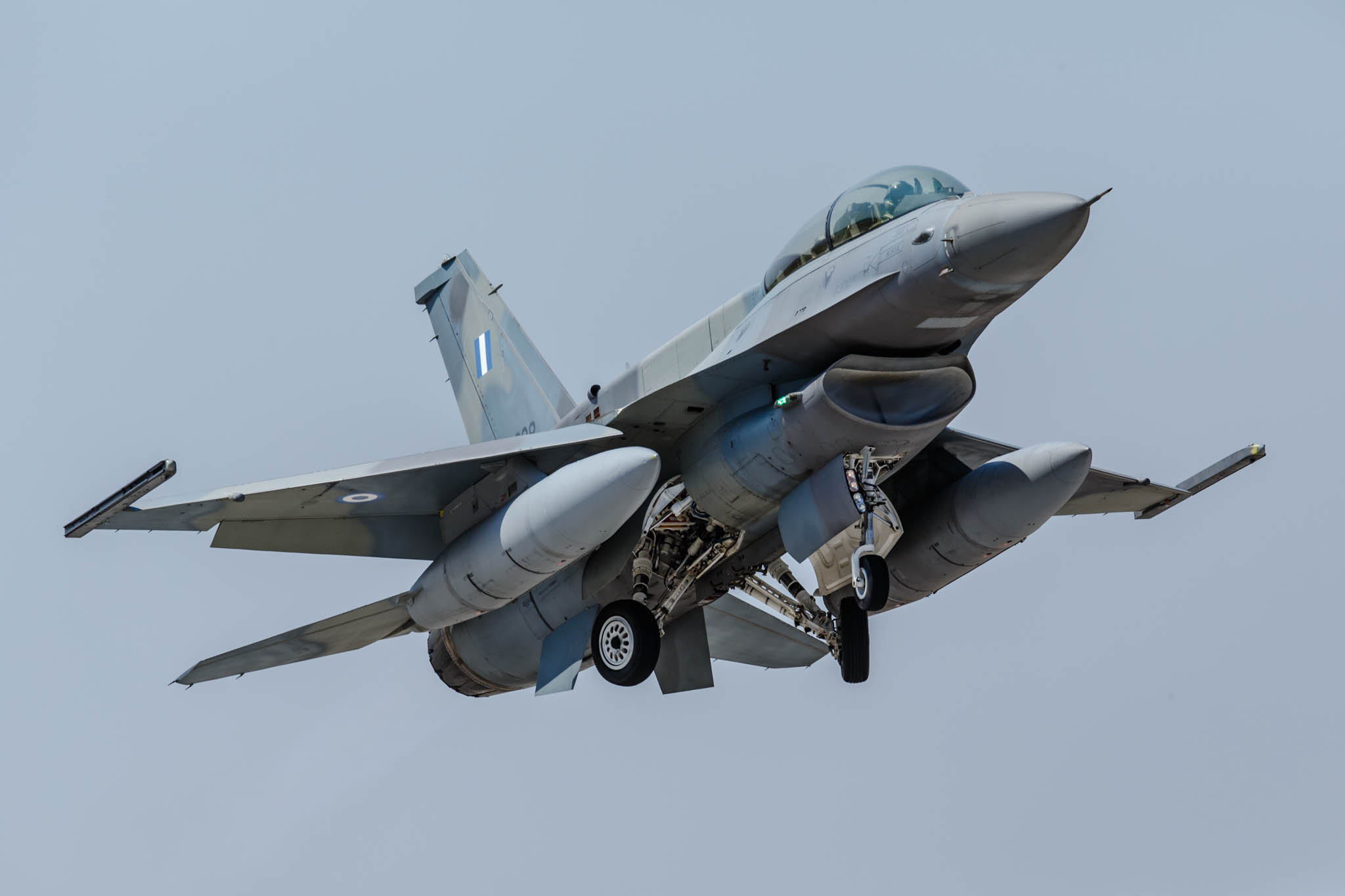 |
F-16D Block 52M Fighting Falcon (028)
|
| Left to right: F-16D Block 52M Fighting Falcon (028). |
| Left to right: F-16C Block 52M Fighting Falcon (015) fitted with Conformal Fuel Tanks (CFT). |
F-16C Block 52M Fighting Falcon (020) fitted with CFTs.
|




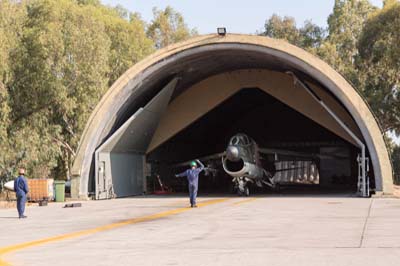
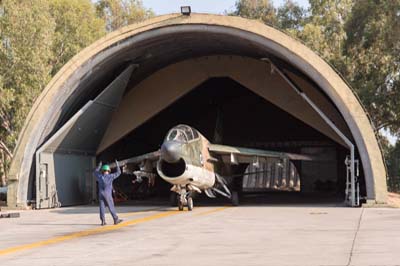
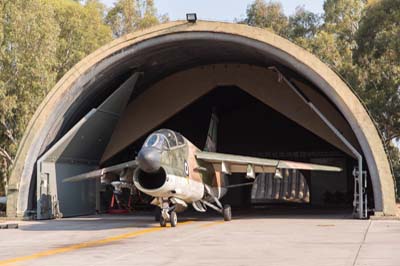
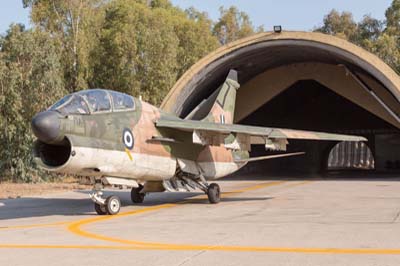
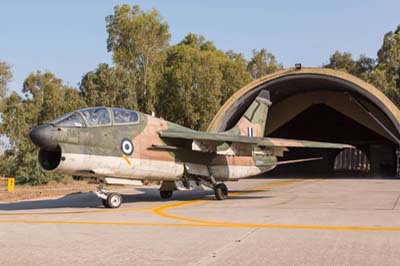
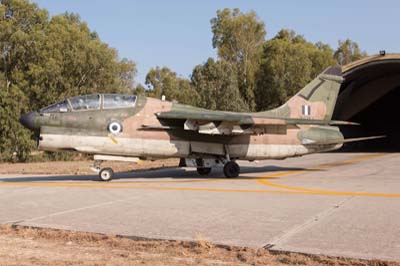
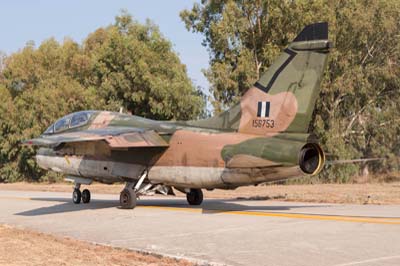
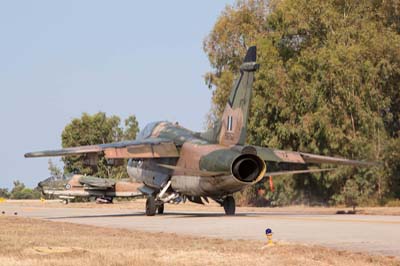
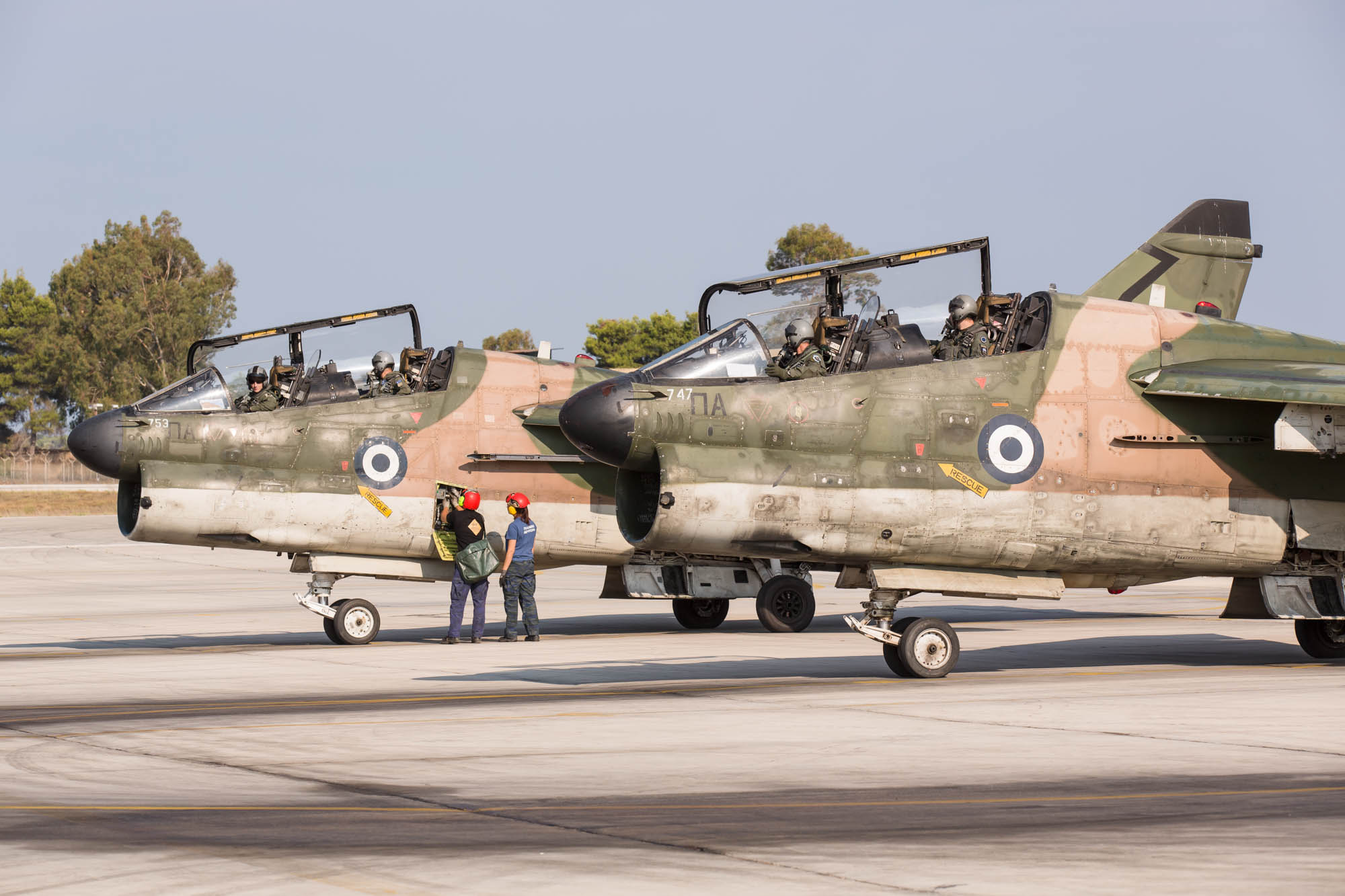
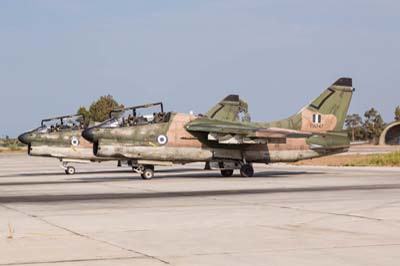
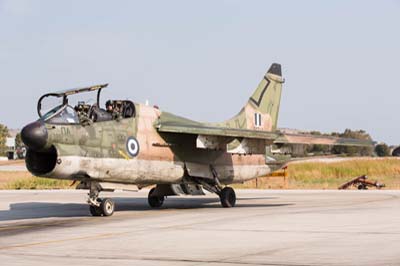
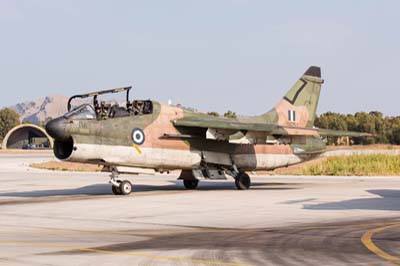
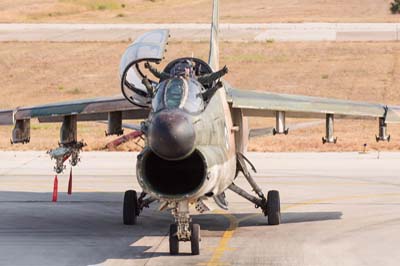
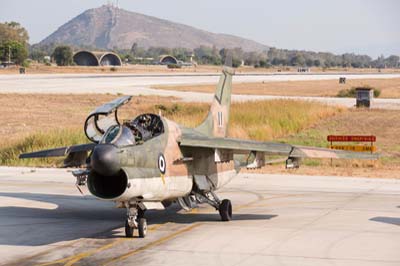
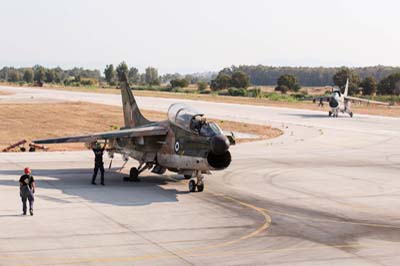
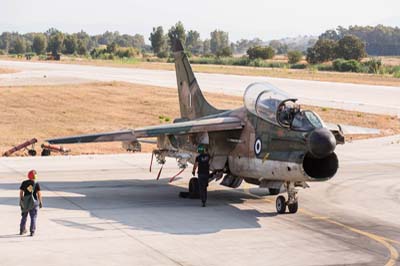
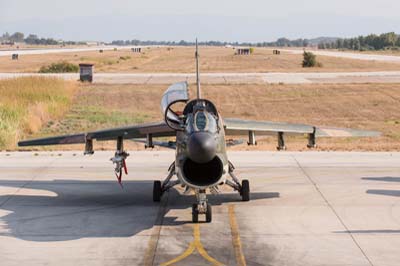
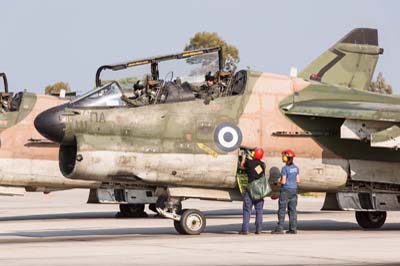
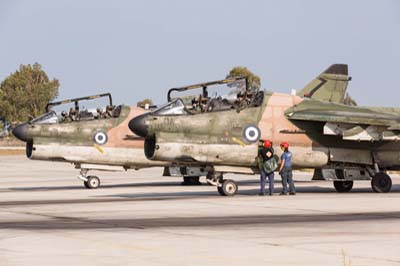
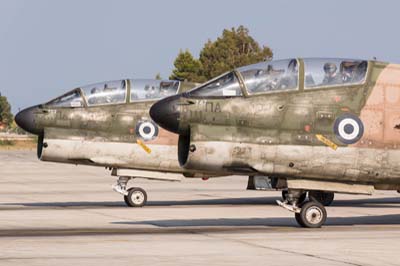
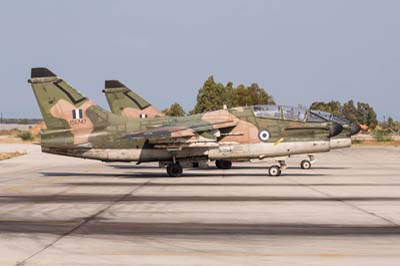
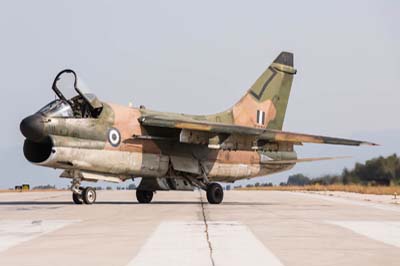
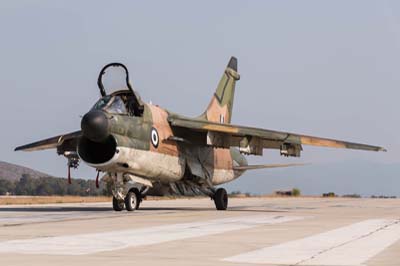

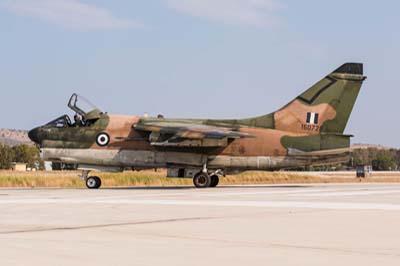
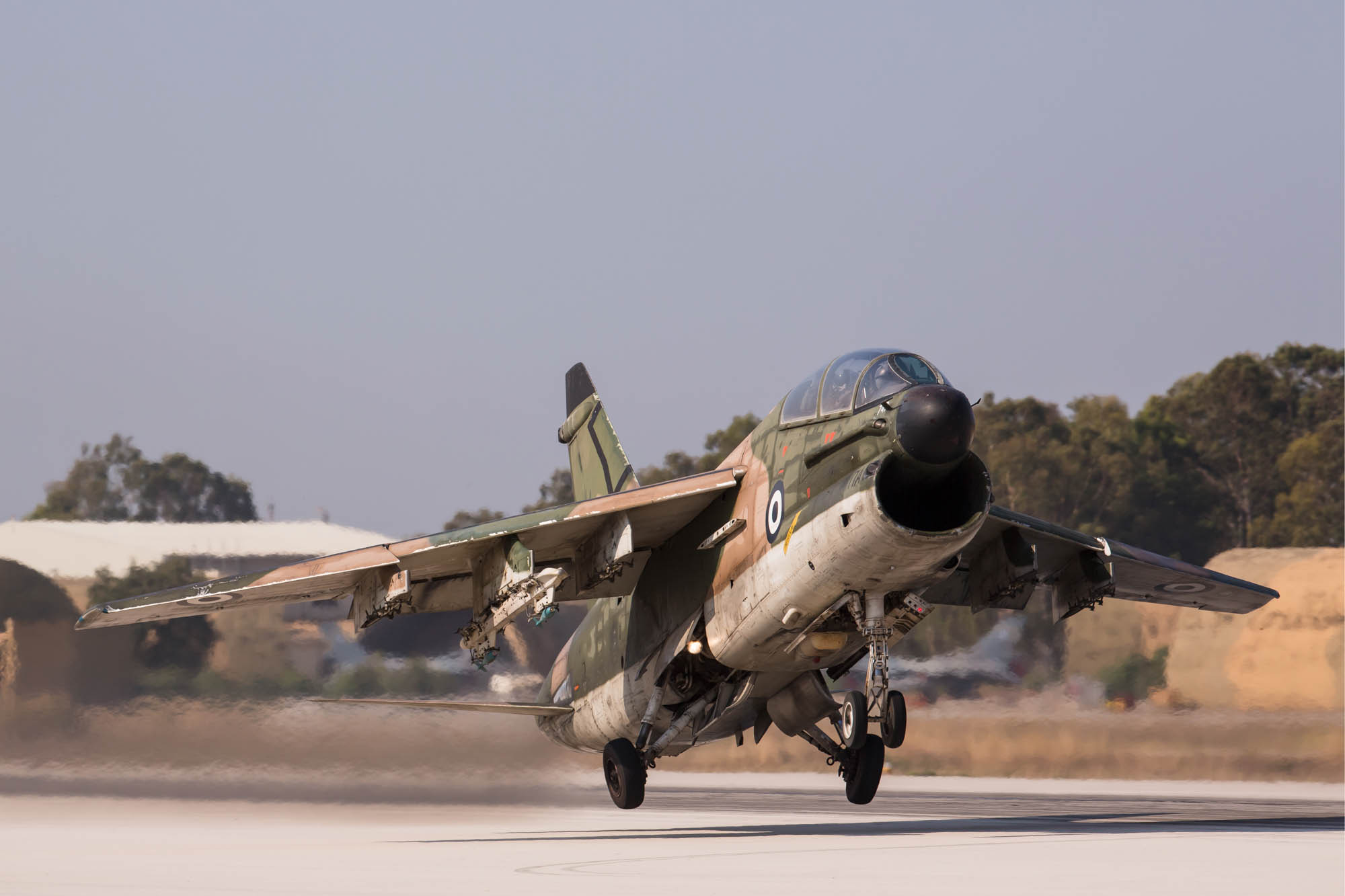
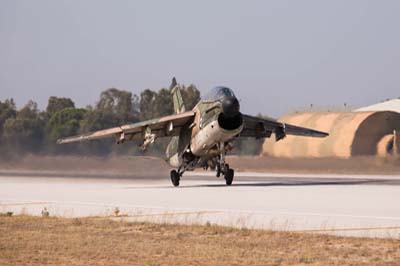
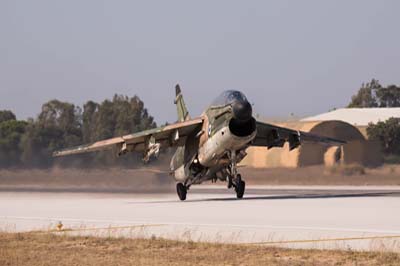

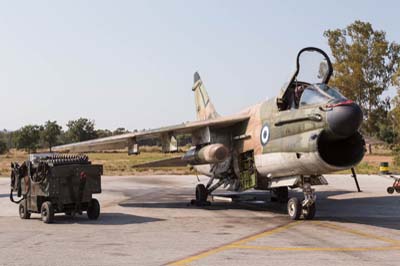
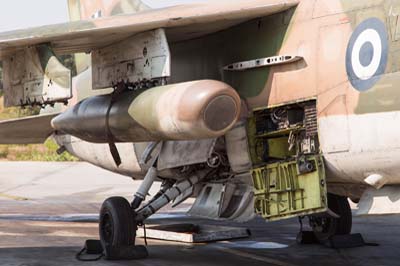
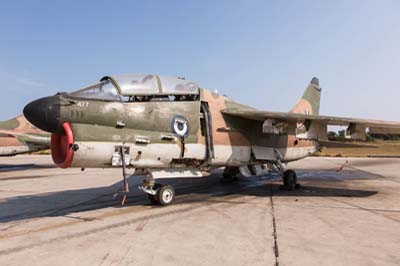
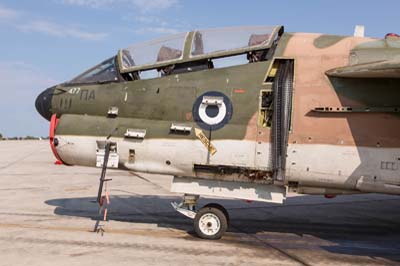
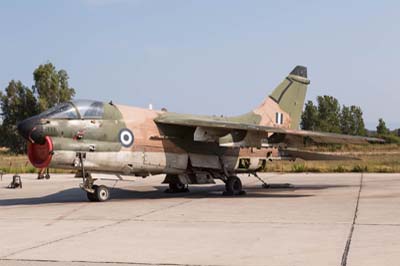
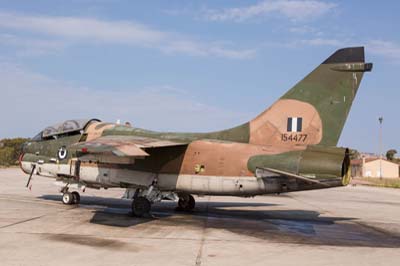
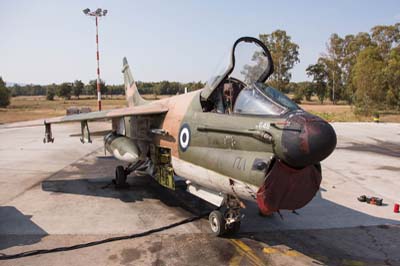
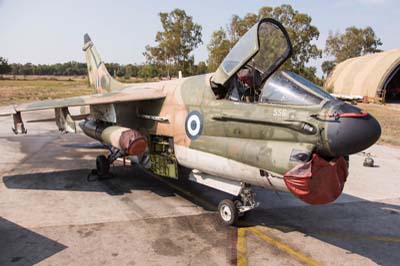

 The first of the latest batch of F-16 Block 52M arrived at Araxos on May 22, 2009 for the 335 Squadron to replace the LTV A-7E Corsair II, leaving just 336 Squadron to operate the aircraft for an expected further two years. The batch was completed when the last Block 52M (F-16D serial 030) arrived with three F-16C Block 52Ms on January 28, 2010.
The first of the latest batch of F-16 Block 52M arrived at Araxos on May 22, 2009 for the 335 Squadron to replace the LTV A-7E Corsair II, leaving just 336 Squadron to operate the aircraft for an expected further two years. The batch was completed when the last Block 52M (F-16D serial 030) arrived with three F-16C Block 52Ms on January 28, 2010.
